Description/achievement of initiative
The goal of the Pacific Islands National Priorities Multi-Focal Area ‘Ridge-to-Reef’ (R2R) program is to maintain and enhance Pacific Island countries’ ecosystem goods and services (provisioning, regulating, supporting and cultural) through integrated approaches to land, water, forest, biodiversity and coastal resource management that contribute to poverty reduction, sustainable livelihoods and climate resilience. This goal will be achieved through a series of national multi-focal area R2R demonstration projects which will support and address national priorities and development needs while delivering global environmental benefits in line with GEF focal area strategies (Biodiversity, Land Degradation, Climate Change Mitigation, International Waters) and Climate Change Adaptation. In this programme, the Pacific Islands Countries (PICs) emphasize the need to focus on their own priority national activities as they utilize STAR resources. Experience has shown that an integrated approach from ridge to reef (and ocean-Ridge to Reef or R2R) is necessary for poverty reduction, sustainability, and capacity enhancement for small countries with few human resources to undertake projects. Hence, each country is planning to adopt specific aspects of R2R (see Section E for details).
Implementation methodologies
The Pacific Islands R2R program has been designed by the Pacific Island countries to strategically use their GEF STAR allocations to meet both their national priorities and adhere to relevant GEF focal area objectives, outcomes, indicators and outputs. Other than Papua New Guinea and Fiji, all the Pacific Island countries have STAR allocations less than $7 million which allows them flexibility to program all of their STAR resources across individual or multiple focal areas and focal area strategies. Using this flexibility, each national R2R project (PIF) is being designed to deliver tangible and quantifiable global environmental benefits across one or more GEF STAR focal areas, strategies, and funds, including consistency with BD, LD, CC-M, CC-A (SCCF) and IW focal areas as well as SFM. The R2R approach provides the appropriate framework for multi-focal projects addressing environmental and natural resource management issues in priority catchments and their linked coastal areas. Actions in each focal area are intended to complement each other to promote a truly integrated approach in managing biological diversity and other natural resources. The program seeks to focus on innovation, testing, and catalyzing implementation of cutting-edge methodologies, technologies and policy reforms with the objective of enabling replication and future scaling-up of integrated R2R approaches.
Arrangements for Capacity-Building and Technology Transfer
National and local capacities for ICM, IWRM, SLM and SFM will be improved to enable best practice in integrated, climate resilient Ridge-to-Reef approaches in natural resource management. This will be accomplished through:-National training needs assessments to identify priority needs and for the development of formally accredited courses for the effective transfer of knowledge and skills in integrated approaches in environment and natural resources management;Advanced training in ICM/IWRM and other integrated (SLM, SFM) approaches to natural resources and environmental management and climate change adaptation conducted to benefit government staff in all PICs in collaboration with internationally-recognized institution(s) for the conduct of the training and use of training toolsNational human capacity strategies for mainstreaming R2R (ICM, IWRM, SLM, SFM) will be formulated and adopted in 14 PICs to accompany innovative post-graduate training program and mentoring/leadership programs.GEF funding is directly focused on developing demonstration sites with the latest, but small-scale, technology that will be appropriate for Pacific island communities by promoting the use of appropriate technology, traditional knowledge and practices and strengthen linkages with nationally available expertise and through the development of key knowledge tools in the form of synthesis reports on: (i) climate variability in coastal systems; (ii) hazards and coastal area planning; (iii) ‘blue forests’ and livelihoods; (iv) spatial planning in coastal fisheries; (v) water security and wastewater management; and (vi) land and marine tenure and use designation, including implications for coastal and marine spatial planning. These will be disseminated online and supporting multi-media products will be developed and syndicated regionally to stimulate national and regional level uptake and use in policy-making and planning. To further support the uptake of regionally accumulated scientific knowledge in policy-making and planning, the project will facilitate exchanges between government and the scientific community via meetings of the Regional Steering Committee and national Inter-Ministry Committees. Linkages will also be established with the community leaders and local government round-table meetings to support broad dissemination of regionally consolidated knowledge and science at the community level.
Coordination mechanisms/governance structure
The R2R program as a whole will be guided by an R2R Program Steering Committee (PSC) which will meet annually to review progress, provide strategic guidance and advice, and facilitate program level coordination and communication. The R2R Regional Steering PSC the national inter-ministerial committee) the GEF agencies (UNDP, UNEP, FAO) and the Pacific Community (SPC). Regional and National Program Coordination mechanisms have been put in place to ensure National, regional and Inter agency coordination of the program’s supporting projects. National inter-ministerial committees provide oversight of integrated approaches and national reporting whilst regional technical and operational backstopping support is provided to national R2R projects to facilitate timely delivery of overall program goals. The regional project will also provide coordination functions and linkages with the GEF biodiversity, climate change, land degradation, Forests and International Waters focal areas in the national STAR projects and would facilitate dialogue and action planning through national Inter-Ministry Committees on responses to emerging water, land and climate issues. Similarly it will facilitate coordinated exchanges of experience and results of the GEF portfolio of investments in a broader regional R2R programme for PacSIDS. Linkages with co-financed activities on water resource and wastewater management, coastal systems and climate adaptation and disaster risk management will ensure more targeted capital investment in coastal infrastructure within an ICM framework.
Partner(s)
Cook Islands, Fiji, Micronesia, Kiribati, Marshall Islands, Nauru, Niue, Papua New Guinea, Palau, Solomon Islands, Tonga, Tuvalu, Vanuatu, and Samoa with the GEF, UNDP, FAO, UNEP and SPC.
Progress reports
Goal 1
1.5 - By 2030, build the resilience of the poor and those in vulnerable situations and reduce their exposure and vulnerability to climate-related extreme events and other economic, social and environmental shocks and disasters
1.b - Create sound policy frameworks at the national, regional and international levels, based on pro-poor and gender-sensitive development strategies, to support accelerated investment in poverty eradication actions
Goal 2
2.4 - By 2030, ensure sustainable food production systems and implement resilient agricultural practices that increase productivity and production, that help maintain ecosystems, that strengthen capacity for adaptation to climate change, extreme weather, drought, flooding and other disasters and that progressively improve land and soil quality
Goal 3
3.9 - By 2030, substantially reduce the number of deaths and illnesses from hazardous chemicals and air, water and soil pollution and contamination
Goal 4
4.4 - By 2030, substantially increase the number of youth and adults who have relevant skills, including technical and vocational skills, for employment, decent jobs and entrepreneurship
4.b - By 2020, substantially expand globally the number of scholarships available to developing countries, in particular least developed countries, small island developing States and African countries, for enrolment in higher education, including vocational training and information and communications technology, technical, engineering and scientific programmes, in developed countries and other developing countries
Goal 5
5.5 - Ensure women’s full and effective participation and equal opportunities for leadership at all levels of decision-making in political, economic and public life
5.c - Adopt and strengthen sound policies and enforceable legislation for the promotion of gender equality and the empowerment of all women and girls at all levels
Goal 6
6.2 - By 2030, achieve access to adequate and equitable sanitation and hygiene for all and end open defecation, paying special attention to the needs of women and girls and those in vulnerable situations
6.3 - By 2030, improve water quality by reducing pollution, eliminating dumping and minimizing release of hazardous chemicals and materials, halving the proportion of untreated wastewater and substantially increasing recycling and safe reuse globally
6.5 - By 2030, implement integrated water resources management at all levels, including through transboundary cooperation as appropriate
6.6 - By 2020, protect and restore water-related ecosystems, including mountains, forests, wetlands, rivers, aquifers and lakes
6.a - By 2030, expand international cooperation and capacity-building support to developing countries in water- and sanitation-related activities and programmes, including water harvesting, desalination, water efficiency, wastewater treatment, recycling and reuse technologies
6.b - Support and strengthen the participation of local communities in improving water and sanitation management
Goal 12
12.2 - By 2030, achieve the sustainable management and efficient use of natural resources
12.8 - By 2030, ensure that people everywhere have the relevant information and awareness for sustainable development and lifestyles in harmony with nature
Goal 13
13.1 - Strengthen resilience and adaptive capacity to climate-related hazards and natural disasters in all countries
13.2 - Integrate climate change measures into national policies, strategies and planning
13.3 - Improve education, awareness-raising and human and institutional capacity on climate change mitigation, adaptation, impact reduction and early warning
13.b - Promote mechanisms for raising capacity for effective climate change-related planning and management in least developed countries and small island developing States, including focusing on women, youth and local and marginalized communities
* Acknowledging that the United Nations Framework Convention on Climate Change is the primary international,
intergovernmental forum for negotiating the global response to climate change.
Goal 14
14.1 - By 2025, prevent and significantly reduce marine pollution of all kinds, in particular from land-based activities, including marine debris and nutrient pollution
14.2 - By 2020, sustainably manage and protect marine and coastal ecosystems to avoid significant adverse impacts, including by strengthening their resilience, and take action for their restoration in order to achieve healthy and productive oceans
14.5 - By 2020, conserve at least 10 per cent of coastal and marine areas, consistent with national and international law and based on the best available scientific information
14.7 - By 2030, increase the economic benefits to Small Island developing States and least developed countries from the sustainable use of marine resources, including through sustainable management of fisheries, aquaculture and tourism
Goal 15
15.1 - By 2020, ensure the conservation, restoration and sustainable use of terrestrial and inland freshwater ecosystems and their services, in particular forests, wetlands, mountains and drylands, in line with obligations under international agreements
15.5 - Take urgent and significant action to reduce the degradation of natural habitats, halt the loss of biodiversity and, by 2020, protect and prevent the extinction of threatened species
15.9 - By 2020, integrate ecosystem and biodiversity values into national and local planning, development processes, poverty reduction strategies and accounts
15.a - Mobilize and significantly increase financial resources from all sources to conserve and sustainably use biodiversity and ecosystems
Goal 17
17.9 - Enhance international support for implementing effective and targeted capacity-building in developing countries to support national plans to implement all the sustainable development goals, including through North-South, South-South and triangular cooperation
17.14 - Enhance policy coherence for sustainable development
17.17 - Encourage and promote effective public, public-private and civil society partnerships, building on the experience and resourcing strategies of partnerships
Data, monitoring and accountability




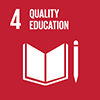
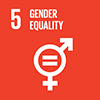
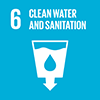


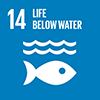

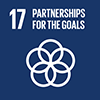
 Time-frame: July 2015 - December 2020
Time-frame: July 2015 - December 2020